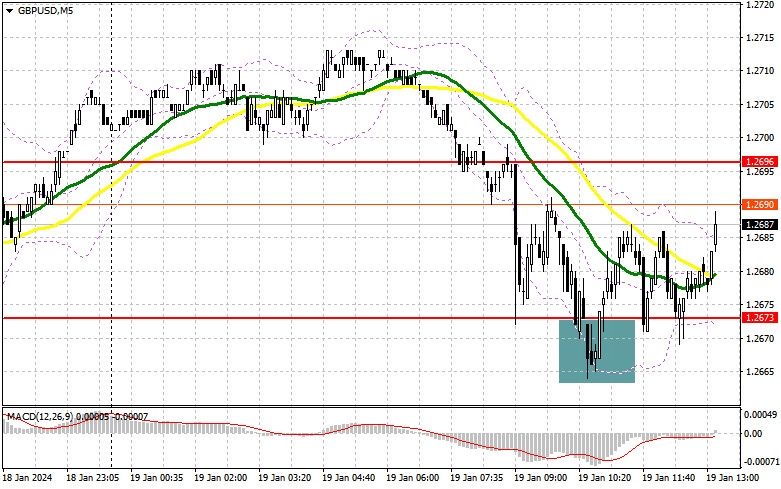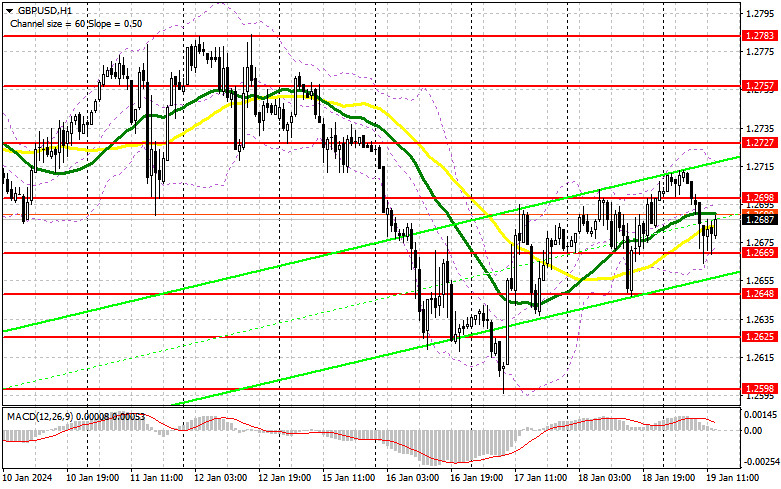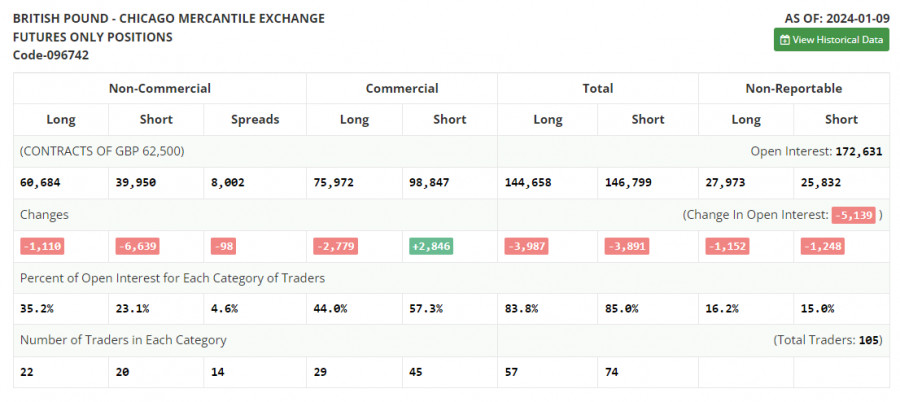
In my morning forecast, I drew attention to the level of 1.2673 and planned to make market entry decisions based on it. Let's take a look at the 5-minute chart and analyze what happened there. A drop and the formation of a false breakout at this level led to an excellent buying entry point. However, as you can see on the chart, the upward movement has only been about 15 points so far. We will count on the signal's performance in the second half of the day after the release of a series of U.S.-related statistics. The technical picture has been slightly revised for the second half of the day.

For opening long positions on GBP/USD, the following is required:
The absence of significant UK statistics has influenced the pound's direction, but after a slight decline, buyers quickly regrouped, defending the support at 1.2673. A lot now depends on the U.S. data. Special attention will be given to reports on the University of Michigan Consumer Sentiment Index and inflation expectations from the same university. A decrease in inflationary pressure will support the pound, leading to the realization of the morning buying entry point. If pressure on the pound increases, bulls will need to prove themselves again around 1.2669. I will act similarly to the first half of the day: buying on a false breakout around the 1.2669 support will provide an excellent entry point for long positions, continuing the bullish trend with a target of revisiting 1.2698. A breakout and consolidation above this range will strengthen demand for the pound and open the way to 1.2727. The ultimate target will be the high at 1.2757, where I plan to take profit. In the scenario of a pair's decline and the absence of activity from bulls at 1.2669, trading will remain within a sideways channel, and pressure on the pound will increase. In such a case, I will postpone buying until testing 1.2648. Only a false breakout there will confirm the correct market entry point. I plan to buy GBP/USD on a rebound immediately from 1.2625 with a target of a 30-35 point intraday correction.
For opening short positions on GBP/USD, the following is required:
Sellers are currently testing the market, but active pressure has not yet materialized. In the event of a bullish reaction to the data, only a false breakout around the 1.2698 resistance will confirm the selling entry point, continuing the bearish market to return to the new support at 1.2669, formed by the end of the first half of the day. A breakthrough and a retest from the bottom to the top of this range will deliver a more significant blow to bull positions, disrupting the market's balance and opening the path to 1.2648. The ultimate target will be the area around 1.2625, where I plan to make a profit. In the scenario of GBP/USD rising and the lack of activity at 1.2698 in the second half of the day, which is likely to happen, buyers will regain the initiative. In such a case, I will delay selling until a false breakout occurs at the level of 1.2727. If there is no downward movement there, I will sell GBP/USD immediately on the rebound from 1.2757, but only in anticipation of a pair's correction down by 30-35 points.


Indicator signals:
Moving averages:
Trading is conducted around the 30 and 50-day moving averages, indicating a sideways market.
Note: The period and prices of moving averages are considered by the author on the H1 hourly chart and differ from the general definition of classical daily moving averages on the D1 daily chart.
Bollinger Bands:
In case of a decline, the lower boundary of the indicator at 1.2669 will act as support.
Indicator Descriptions:
Moving Average (MA): Period 50. Marked in yellow on the chart.Moving Average (MA): Period 30. Marked in green on the chart.Moving Average Convergence/Divergence (MACD): Fast EMA period 12. Slow EMA period 26. SMA period 9.Bollinger Bands: Period 20.Non-commercial traders: Speculators, such as individual traders, hedge funds, and large institutions use the futures market for speculative purposes and meet certain requirements.Long non-commercial positions represent the total long open positions of non-commercial traders.Short non-commercial positions represent the total short open positions of non-commercial traders.The total non-commercial net position is the difference between the short and long positions of non-commercial traders.